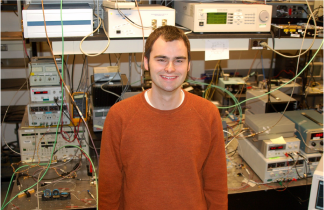 (Fig. 1 From P. Del'Haye, Nature, 450 1214, (2007). a) frequency comb spectrum, b) degenerate and non-degenerate four-wave-mixing among cavity modes, c) SEM image of torroidal microcavity)
(Fig. 1 From P. Del'Haye, Nature, 450 1214, (2007). a) frequency comb spectrum, b) degenerate and non-degenerate four-wave-mixing among cavity modes, c) SEM image of torroidal microcavity)On Thursday May 5, from 8pm- 10pm, conference goers will be madly dashing from ballroom to ballroom to hear the latest breaking optics research- it's like a geeky Black Friday for optical science. There are 36 talks in total, but because they are spread out among three sessions, you realistically can only hear 12. Trying to see more requires cat-like agility to maneuver around standing-room-only crowds. Good thing postdeadline abstracts were recently posted. Be sure to look through the agenda of sessions and plan your evening.
This year's sessions include record breaking feats typical of CLEO postdealine papers: an ultralow 181 nA lasing threshold in a nanocavity laser (PDPA1), a whopping 4176% W-1cm-2 conversion efficiency for parametric fluorescence in a diode laser (PDPA3), a limit-pushing 1.5 mm imaging depth in a mouse brain cortex using a two-photon microscope (PDPB3), Mid-IR to keV X-ray supercontinuum generation (PDPC12), a noise figure less than 3 dB in a phase sensitive amplifier (PDPB10), and many others.
Though the sessions will host a wide variety of topics in fundamental and applied optics, some themes that emerge from this year's postdeadline abstracts are papers that demonstrate broadband frequency generation, biomedical imaging (the postdeadline subcategory CLEO: Applications & Technology 1: Biomedical has the most papers of the three sessions), and nanoscale lasers and nano-photonic devices.
One of the papers on broadband frequency generation, PDPA4, "Mid-Infrared Frequency Combs Based on Microresonators," by Wang et al. from a German, Swiss, and French collaboration (note one of et al's s is Nobel Laureate Theodor Hansch), builds on previous work reported in a 2007 Nature paper to produce a monolithic comb generator in the Mid-IR. The reason for the microresonator is to get rid of the big Ti:Sapphire laser typically used to generate frequency combs in order to scale down cost, complexity and size of the comb generator. The high-Q microresonator, an example of which is shown in the Fig. 1, requires a simple CW pump. Besides being smaller, simpler, and potentially much cheaper, the microresonator has the advantage of producing comb spacings greater than 500 GHz (something unattainable by comb generators that use ultrafast pulsed seed sources like the Ti:Sapph).

(Fig. 2 From Daylight Solutions, interesting molecules arranged by peak absorption wavelength)
One compelling reason for building a comb generator in the Mid-IR is for ultrasensitive, broadband spectroscopy in an interesting spectral region for which there is a dearth of laser sources. Figure 2. from Daylight Solutions (CLEO booth 1526), a company that fabricates quantum cascade lasers between 3.0 and 20.0 microns, sorts molecules of interest by their peak spectral absorbance. These molecules are interesting for environmental monitoring (ozone, water, methane, carbon dioxide), threat and standoff detection (TNT, TATP, VX), and biomedical spectroscopy (glucose).
Similar to the European group's comb generator, PDPA6, "Octave-Spanning Supercontinuum Generation in CMOS-Compatible Silicon Nitride Waveguides, by Halir et al. (Recent MacArthur fellow, Mihal Lipson, is one of the notable et al's on this paper) uses a nanoscale structure, a silicon-based waveguide, to generate an impressive 1.6 octave bandwidth up to 2025 nm on a CMOS compatible platform. Your plug-and-play supercontinuum source is just around the corner! But will it be Windows 7 compatible?
Other postdeadline papers concerned with broadband frequency generation are PDPA5, "Self-Referenced Frequency Comb from a Tm-fiber Amplifier via PPLN Waveguide Supercontinuum," PDPA7, "Spectral Line-by-Line Pulse Shaping of an On-Chip Microresonator Frequency Comb," PDPC9, "Supercontinuum Generation with Self-Healing Airy Pulses," and PDPC12, "Bright Coherent Attosecond-to-Zeptosecond KeV X-ray Supercontinua."

(Fig. 3. From Kobat et al., Optics Exp., 17, 13354, (2009). a) Two-photon image of a mouse cortex with 775 nm excitation and 1280 nm excitation. b) Attenuation of fluorescence vs. depth for 775 nm and 1280 nm excitation.)
New additions to this year's postdeadline session are subcategories in CLEO: Applications and Technology, most notably CLEO: Applications & Technology 1: Biomedical. The four papers in this subcategory demonstrate pushing the limits on resolution, high-speed image acquisition, or penetration depth for different microscopic techniques. PDPB3, "In vivo two-photon imaging of cortical vasculature in mice to 1.5-mm depth with 1280 nm excitation," by Kobat et al. shows record imaging depth in a mouse brain cortex using two-photon microscopy by cleverly using long-wavelength excitation. Typical two-photon microscopes use 800 nm, ultrafast pulses from a Ti:Sapphire laser to excite the tissue to be imaged. Photons may not make it to the depth of interest because of absorption or scattering. In brain tissue, scattering dominates over absorption between 350 nm -1300 nm. By using a longer excitation source, more photons can make it to the target allowing for deeper imaging.
Longer wavelength excitation also means longer wavelength emission, for which there is a decreased absorption due to intrinsic tissue. So by using a 1300 nm excitation source, photons scatter less on the way to the tissue to be imaged, and are absorbed less as the fluorescence makes it way back to the objective lens. Resolution is decreased because of the the longer wavelength, however, tissue can be imaged significantly deeper. Figure 3. shows the difference in image depth using 1280 nm excitation as opposed to 775 nm excitation in the authors' previous 2009 work for which they showed 1.0 mm imaging depth.
These are only some examples of the hot research to be presented at the postdeadline session. After all, there were only 36 accepted papers (they're all hot). Make sure to wear a good pair of shoes, maybe do some some pre-stretching, but most importantly, plan out your postdeadline itinerary by looking at the abstracts. This is one venue where you can be assured every conference attendee will be present.

No comments:
Post a Comment